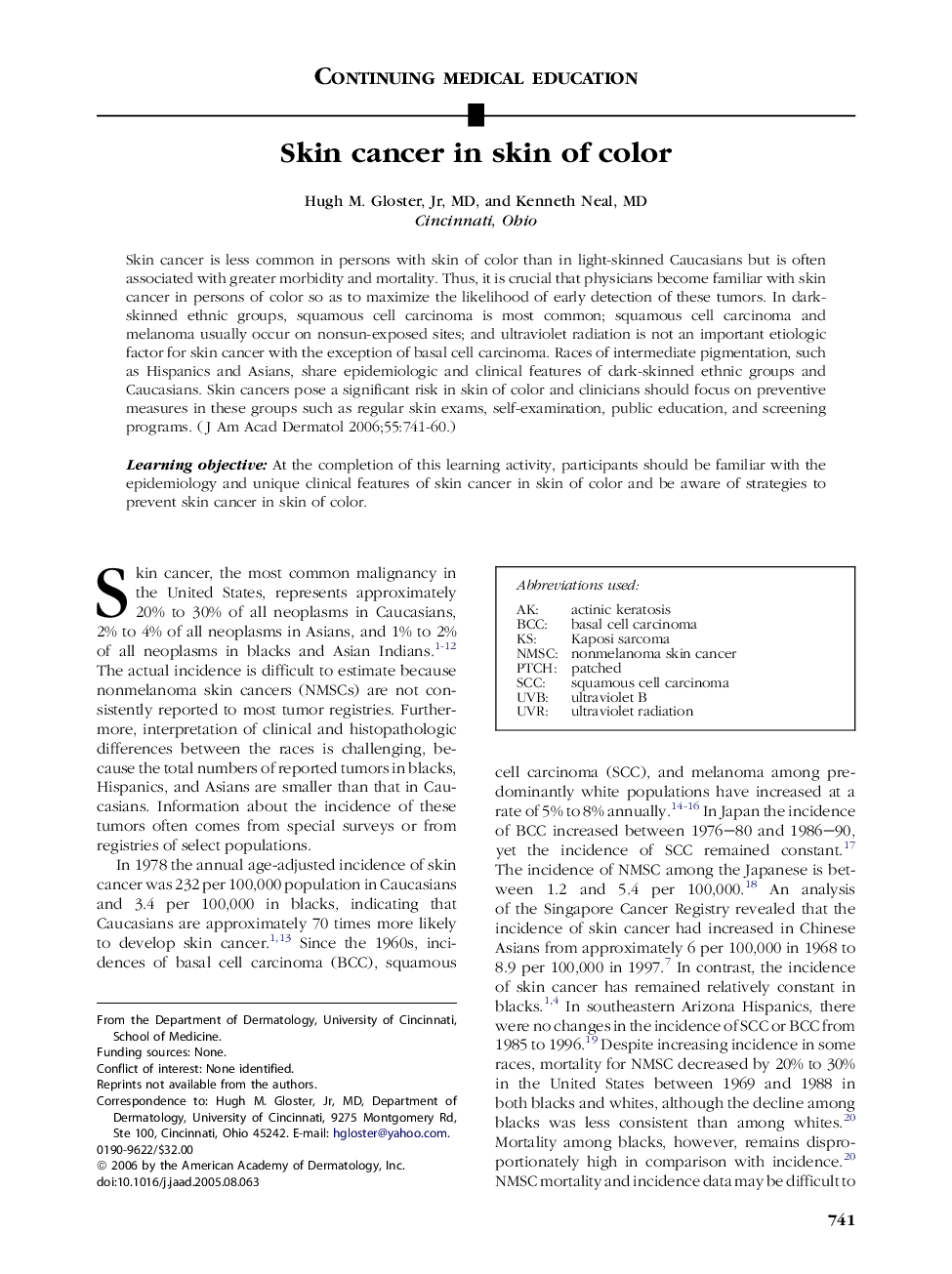| Article ID | Journal | Published Year | Pages | File Type |
|---|---|---|---|---|
| 3210171 | Journal of the American Academy of Dermatology | 2006 | 20 Pages |
Skin cancer is less common in persons with skin of color than in light-skinned Caucasians but is often associated with greater morbidity and mortality. Thus, it is crucial that physicians become familiar with skin cancer in persons of color so as to maximize the likelihood of early detection of these tumors. In dark-skinned ethnic groups, squamous cell carcinoma is most common; squamous cell carcinoma and melanoma usually occur on nonsun-exposed sites; and ultraviolet radiation is not an important etiologic factor for skin cancer with the exception of basal cell carcinoma. Races of intermediate pigmentation, such as Hispanics and Asians, share epidemiologic and clinical features of dark-skinned ethnic groups and Caucasians. Skin cancers pose a significant risk in skin of color and clinicians should focus on preventive measures in these groups such as regular skin exams, self-examination, public education, and screening programs.Learning objectiveAt the completion of this learning activity, participants should be familiar with the epidemiology and unique clinical features of skin cancer in skin of color and be aware of strategies to prevent skin cancer in skin of color.
